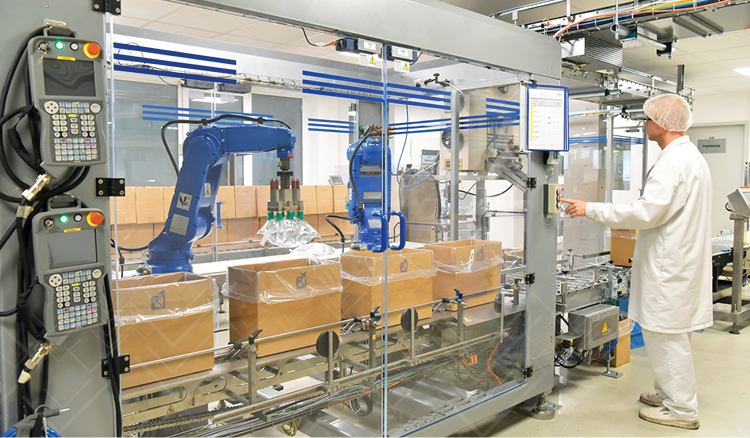What is a Labor Pool?
Operations leaders are facing labor issues daily related to recruiting, retention, utilization, and performance. Maybe you are facing these challenges and making trade-offs so you have the right amount of labor to meet your production schedule. Doing so is a balancing act that requires some out-of-the-box thinking.
One of those out-of-the-box ideas is the concept of a labor pool. Maybe you’ve heard of it and maybe you haven’t. In this article, I am going to walk you through the concept of a labor pool and explain how you can use it to take a new approach to operational excellence.
In my career as a management consultant and now VP of Operations for Veryable, I’ve walked hundreds of shop floors to see firsthand the issues producers and distributors face today. A common issue is figuring out how to use labor strategically to compete in an environment that is faster and more dynamic than ever.
At Veryable, we help businesses implement our marketplace of on-demand labor to develop flexibility and competitive operations. Since the company’s start in 2017, we’ve seen businesses reduce lead times and increase gross profits dramatically after incorporating on-demand labor into their operations.
After reading this article, you will know how a labor pool works and be ready to start building your own labor pool for better flexibility in your operations.
What is a labor pool? How does it work?
A labor pool is a network of independent workers familiar with your operation that can work on an as-needed basis. It is a flexible extension of your trained workforce that you build over time by rotating a mix of new and familiar workers into your operations for short periods of time.
Think of a labor pool as a group of workers who you know, like, and trust. To use a sports analogy, you have your full-time employees that you can think of as “starters.” Your labor pool is like your “bench.” You know who they are and they’re ready to jump into the game. They can do so whenever they’re needed, because you’ve been training your “bench” during the off season alongside your “starters.”
For example, imagine you are the operations manager of a consumer products company who primarily does e-commerce sales. You are at the whim of what consumers order on a daily basis and have to turn around and get those orders out the door by the next day.
In normal times when volume is steady, doing this might not be a tall task. But when your volume is unpredictable or your company runs a big promotional sale, it’s daunting thinking about how you’ll ship out twice the volume of products with the same next-day shipment commitment.
“It’s impossible!” you say. But we’ve seen time and time again how companies are able to meet this fluctuating or unpredictable demand with their labor pool.
If you’ve built up a labor pool of reliable workers, you can quickly inject just the right amount of labor into your operation.
Just keep the same level of full-time employees you always have, while also posting the work opportunity to your labor pool. Then workers you’ve already trained can help you meet that extra demand and maintain the delivery commitment your company stands by. In doing so, you aren’t creating significant overtime expenses or missing delivery commitments to your customers.
How labor pools are different from traditional staffing
Let’s take the prior example and assume you are using what I call the “old paradigm” method to staff up for your big promotional sale. Well before the sale, you have to hire a bunch of new employees. Or, you could sign a temporary staffing agreement, commit to hiring a certain number of workers, and bring in temps ahead of the sale.
These upfront costs drive your costs per unit up and decrease overall labor productivity in the short term, but with no lasting benefit. All the while, you’re constantly overstaffed or understaffed based on current demand because of your fixed contract. After the sale, you are likely going to have to lay off all of those employees you just hired a couple months prior.

If instead you used the “new paradigm” model, you would be able to scale up just-in-time, based on demand. You could dip into your labor pool, which has been filled over time with your network of operators who are already familiar with your operation. When you bring in the workers who you have already trained, there is zero cost to scale because you aren’t having to commit resources and money to onboarding and training workers.
There are costs associated with the initial process of building a labor pool, such as the cost of time spent training new workers for the first time and costs associated with finding the workers. However, these are short term costs that you will only face while building the labor pool. Plus, by the time you have built a labor pool, you will have established a training method that is repeatable so that you can more efficiently train any new workers.
After you have trained these on-demand workers for the first time, you will have a flexible extension of your workforce ready to work with no training or onboarding costs.
Is a labor pool right for your business?
To determine whether or not a Labor Pool is going to be the right fit for your business, consider the following factors:

Bad fits for a labor pool are typically customer-facing roles requiring complex activities from the worker. This is because there’s a lot of training that is required to properly interact in this type of a role. That amount of training would not be worth the cost if the work arrangement is only temporary.
Good fits for a labor pool are in manufacturing, logistics, distribution, and warehousing environments. In these conditions, interacting with customers is not required and the tasks are easier to learn. Some workers in an on-demand labor pool will already have a skill set for a complex task, in which case you would only have to train them on the details of how you want things done in your operation. If you can bring in a worker and they can operate effectively by the end of day one, this makes a good fit for on-demand labor solutions.
The top five benefits of a labor pool
- Reduces Turnover / Improves Retention: With a labor pool, you rely less on full-time employees (FTEs) and therefore aren’t trying to hire constantly. As a result, you experience less true employee turnover and maintain a strong core FTE base. Overtime can lead to burnout, and burnout is a leading cause of turnover, according to a recent employee engagement survey. Instead of causing burnout and turnover, you can build a known group of people who are ready to jump in and work when needed.
- Enables Scalability: With a labor pool, you have just-in-time labor capacity to execute any order on time and in full. Additionally, you are able to bid on work more competitively knowing you can scale as needed to hit the desired service levels.
- Reduces Overtime Pay: With on-demand labor capacity, there is no need to have overtime. This helps you improve your margins and avoid causing your FTEs to leave from being pushed 50+ hours a week for months on end.
- Improves Labor Productivity: Because your labor costs are known and aligned with demand, you can ramp up labor capacity without fear of excess labor costs or lost labor productivity. Productivity isn’t an issue because your labor pool is already trained and familiar with your operation, so you aren’t wasting time training and onboarding over and over again.
- Improves Work Culture: With on-demand capacity at the ready, your FTEs will feel less stressed by not being overworked. They will feel that they are part of the privileged, core group at the company and are motivated to keep their spot as fresh talent works beside them on a regular basis. Plus, they might pick up a few new skills from exposure to workers who are routinely working other sites and learning new ways of doing things.
Ready to build your labor pool?
Building your labor pool is a process. Here at Veryable, we like to think about it as building the ark before the flood. You, the operations manager, should begin building your labor pool by cycling workers into your operation and assessing their work.
If they are on-time, quality, safe workers with a good attitude - great! Add them to your labor pool. If not, simply move on from those individuals who aren’t performing up to expectations, and cycle in more operators.
Our on-demand labor platform has built-in functionality that enables you to designate workers as part of your preferred labor pool. Using a tool like this, over time, you’ll build your labor pool to a sufficient size to support any demand swings you might have.
As a rule of thumb, we encourage businesses to build their labor pool to be three times the size of their potential greatest variable need. For example, if at max variation you need (or don’t need) 10 workers, build a labor pool of 30 workers to ensure you have the necessary coverage to manage those swings.
A labor pool consisting of three times the amount needed avoids reliance on any one worker for one spot. Instead, it creates the opportunity for three workers to bid on the one spot to account for workers being unavailable. This is a cushion for your business. Having more options in your labor pool than you need is the proper way to hedge so you are never without the capacity to manage volume.
If you want to start building your labor pool so you can respond quickly to demand changes, create a free business profile with Veryable and begin posting opportunities today.
To learn more, check out these resources:
How to Build a Labor Pool (Examples and Results)
What Size Should My Labor Pool Be?
Previous Posts
Cycle Time: The KPI That Defines Production Speed and Efficiency
The Future of Manufacturing and Logistics
Create a free business profile today to explore our platform.






